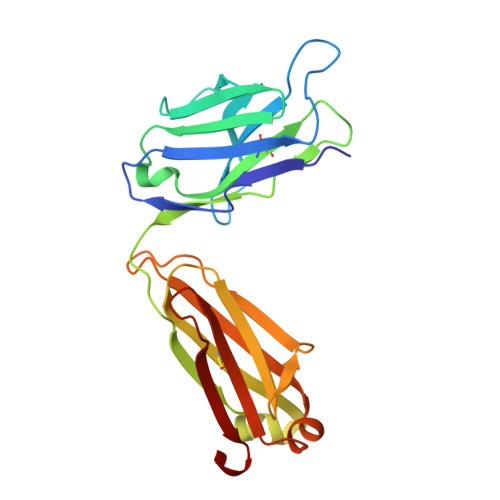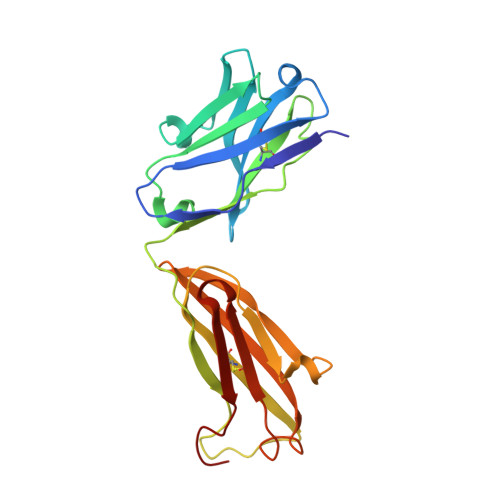Cocrystal Structures of NC6.8 Fab Identify Key Interactions for High Potency Sweetener Recognition: Implications for the Design of Synthetic Sweeteners
Gokulan, K., Khare, S., Ronning, D.R., Linthicum, S.D., Sacchettini, J.C., Rupp, B.(2005) Biochemistry 44: 9889-9898
- PubMed: 16026161
- DOI: https://doi.org/10.1021/bi050613u
- Primary Citation of Related Structures:
1YNK, 1YNL - PubMed Abstract:
The crystal structures of the murine monoclonal IgG2b(kappa) antibody NC6.8 Fab fragment complexed with high-potency sweetener compound SC45647 and nontasting high-affinity antagonist TES have been determined. The crystal structures show how sweetener potency is fine-tuned by multiple interactions between specific receptor residues and the functionally different groups of the sweeteners. Comparative analysis with the structure of NC6.8 complexed with the super-potency sweetener NC174 reveals that although the same residues in the antigen binding pocket of NC6.8 interact with the zwitterionic, trisubstituted guanidinium sweeteners as well as TES, specific differences exist and provide guidance for the design of new artificial sweeteners. In case of the nonsweetener TES, the interactions with the receptor are indirectly mediated through a hydrogen bonded water network, while the sweeteners bind with high affinity directly to the receptor. The presence of a hydrophobic group interacting with multiple receptor residues as a major determinant for sweet taste has been confirmed. The nature of the hydrophobic group is likely a discriminator for super- versus high-potency sweeteners, which can be exploited in the design of new, highly potent sweetener compounds. Overall similarities and partial conservation of interactions indicate that the NC6.8 Fab surrogate is representing crucial features of the T1R2 taste receptor VFTM binding site.
- Department of Biochemistry & Biophysics, Texas A&M University, College Station, Texas 77843-2128, USA.
Organizational Affiliation:


















